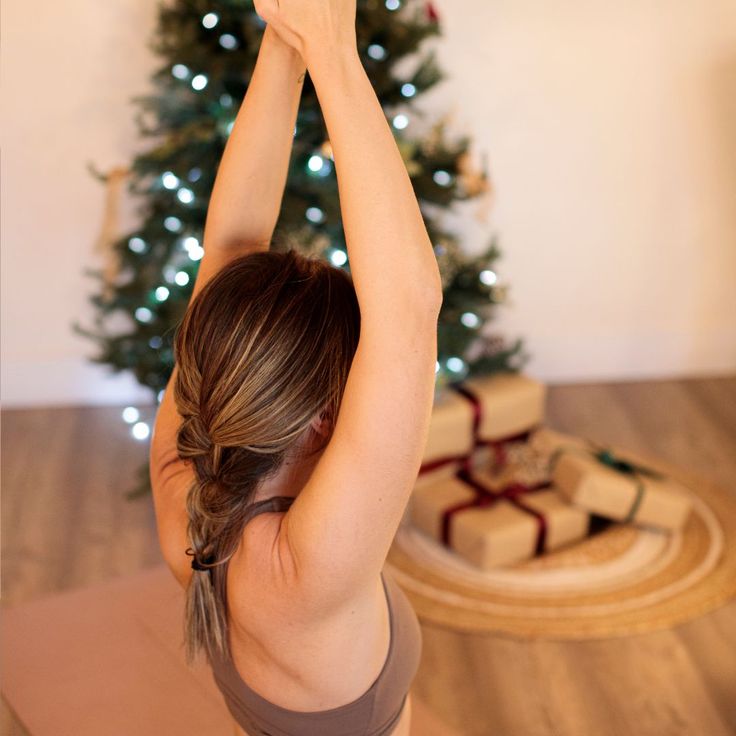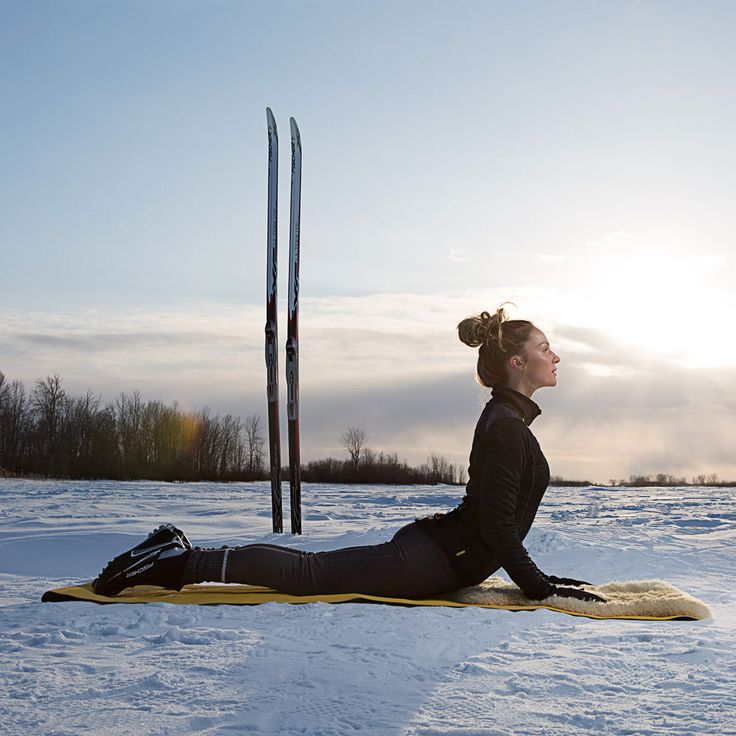As winter settles in, many people feel its impact on their mind and body. This season often brings shorter days, colder weather, and sometimes even the winter blues. Incorporating yoga into your winter wellness routine can help you maintain balance, boost your immunity, and find inner peace during this challenging time. By understanding how to adapt your practices to the unique needs of winter, you can nurture yourself through yoga and self-care.
Yoga is not just a way to keep fit; it’s a holistic approach that can elevate your mood and resilience. Gentle poses, restorative practices, and mindful breathing can become your allies against the chill and darkness. You will discover that these techniques not only support your physical body but also promote mental clarity and emotional stability during the colder months.
Alongside yoga, nourishing your body with seasonal foods and establishing self-care routines can greatly enhance your well-being. Embracing the cozy aspects of winter while keeping yourself active will help you thrive through the season.
Key Takeaways
- Yoga practices support mental and physical resilience in winter.
- Nourishing foods and self-care routines boost overall wellness.
- Restorative exercises help combat the winter blues and promote relaxation.
Understanding Winter’s Impact on Wellbeing
Winter brings unique challenges and opportunities for your wellbeing. It can affect your energy levels, mood, and overall harmony. Knowing how this season influences your body type is key to finding balance and resilience.
Embracing Seasonal Living and Yoga’s Role
Winter often calls for a shift in your daily habits. The cold and darker days can lead to reduced energy and motivation. You might feel more sluggish or withdrawn during this time.
Adapting your yoga practice can help you embrace seasonal living. Focus on restorative yoga and gentle flows that warm your body. Use props like blankets and bolsters to support your practice. These adjustments help balance your mood and energy levels, encouraging relaxation.
Incorporate mindful practices that connect you to the season. Spend time outdoors, even in the cold, to appreciate winter’s beauty. This connection helps foster resilience and maintain clarity during the transition into the new year.
Vata and Kapha Doshas: Balancing Winter Energies
Ayurveda teaches that winter is closely linked to the Vata and Kapha doshas. Vata, associated with air and space, can lead to feelings of dryness and fatigue. Kapha, linked to earth and water, may cause heaviness and sluggishness.
To balance Vata, focus on warm, nourishing foods and calming yoga practices. Incorporate grounding poses like Child’s Pose and gentle forward bends. These help stabilize your energy and ease feelings of anxiety.
For Kapha, engage in more vigorous activities like flowing sequences or dynamic poses. This helps stimulate your energy and reduce feelings of sluggishness. Use a mix of invigorating and calming practices to maintain harmony within your body during winter.
Practices for Inner Harmony and Unity
Maintaining inner harmony and unity during the winter months is essential for well-being. Focusing on restorative practices, meditation, and breathwork can help ease the winter blues while promoting connection and mindfulness.
Restorative Yoga: An Antidote to Winter Blues
Restorative yoga is a gentle practice that encourages deep relaxation. It involves holding poses for extended periods, using props like blankets and bolsters for support. This method helps you release tension and restore balance.
Key Benefits:
- Deep Relaxation: The slow pace allows your body to unwind.
- Mindfulness: Focus on your breath and body, enhancing your awareness.
- Savasana: Finish with Savasana, allowing full integration of your practice.
Aim for sessions of 20-30 minutes, selecting poses such as Child’s Pose, Legs Up the Wall, and Supported Bridge. These poses help to calm the mind and foster a sense of peace and unity within.
Deepening Your Meditation and Breathwork
Meditation and breathwork are powerful tools to deepen your sense of unity. You can practice mindfulness and gratitude meditation to cultivate a positive mindset.
Focus on Breathing: Start with pranayama, the practice of conscious breathing. Techniques like Nadi Shodhana (alternate nostril breathing) can balance energy and promote calmness.
Set a daily routine of 10-15 minutes for meditation. When meditating, find stillness and focus on your breath. Visualize connection with yourself and the world around you. This practice fosters emotional well-being and helps combat feelings of loneliness during winter.
Incorporating these practices can enhance your inner harmony, providing a sense of unity and peace throughout the colder months.


Boosting your immunity during the winter months can be achieved through yoga and self-massage. These practices help you connect with your body while promoting balance and strength in your immune system.
Integrating Ayurveda and Yoga for Winter Health
Ayurveda emphasizes the importance of maintaining warm and nourishing practices during winter. Focus on Ayurvedic principles that support your immunity. This includes consuming warming foods like soups and spices such as ginger and turmeric.
In your yoga practice, incorporate poses like Sun Salutations to stimulate circulation and digestion. This dynamic flow warms your body and energizes you.
Consider alternate nostril breathing (Nadi Shodhana) to enhance your respiratory health. This technique calms the nervous system and balances energy pathways. Together, these practices foster self-compassion and nurture your body against winter challenges.
Self-Massage Techniques for Cold Months
Self-massage, or Abhyanga, is a key practice in Ayurveda. It involves using warm oils, such as sesame or coconut, which can soothe and hydrate your skin. Start by warming the oil in your hands before applying it gently to your body.
Focus on areas such as your neck, shoulders, and joints. A few minutes each day can improve circulation and promote relaxation. Use long, sweeping strokes on larger muscles and circular motions on joints.
Regular self-massage supports the lymphatic system, helping to flush out toxins and improve immunity. Make this practice a part of your winter wellness routine. It not only boosts health but also fosters mindfulness and self-care.
Nourishing Foods and Wellness Routines
Focus on nurturing your body with seasonal foods and creating wellness routines. Both aspects are vital for maintaining health and balance during winter.
Adapting Your Diet to Support Digestive Health
Winter is an excellent time to emphasize root vegetables like carrots, beets, and sweet potatoes. These foods are nourishing and support digestive health. Incorporate oatmeal in your morning routine, which provides warmth and fiber.
Consider adding spices like cinnamon to your meals. This spice can help stimulate digestion and provide warmth. Focus on mindful eating by chewing slowly and appreciating your food’s flavors and textures. Aim for hearty soups and stews that combine vegetables and grains. These dishes can be warming and satisfying, helping you maintain energy during colder months.
Cultivating Warmth and Wellbeing Through Rituals
Create cozy rituals to enhance your wellness. Start with a warm bath infused with essential oils for relaxation. This simple act can nourish your spirit and body after a long day.
Integrate seasonal living by enjoying meals that reflect winter’s bounty. Slow down during mealtimes and embrace the practice of mindful eating. Take time to experience the warmth of your food and the comfort of your surroundings. Consider setting aside time for daily affirmations or meditation. These practices can bolster your mental health and create a sense of calm amid winter’s challenges.
Yoga Sequences for Cold Weather Resilience
Practicing yoga during the winter can help you build strength and promote relaxation. Specific sequences and poses can support both your physical and mental well-being. Focus on postures that generate warmth and those that encourage deep, restorative rest.
Strengthening Postures for Physical and Mental Stability
In winter, it’s vital to maintain strength and stability. Incorporate poses like Trikonasana (Triangle Pose), Dhanurasana (Bow Pose), and Plank to build core strength. These poses stimulate energy and enhance circulation.
Chair Pose is also effective. It engages your legs and core, promoting balance. Another essential pose is Surya Namaskar (Sun Salutation). This sequence warms up the body and prepares you for deeper stretches.
End your strength routine with Fish Pose, which opens the heart and counteracts cold weather fatigue. Focus on your breath during each pose. This connection helps to center your mind and reduce winter stress.
Yin Yoga and Longer Holds for Deep Relaxation
Yin yoga includes long holds that promote relaxation and flexibility. Try restorative poses like Supported Child’s Pose and Corpse Pose to calm your mind and body. These poses are perfect for chilly days when you need extra comfort.
Incorporating longer holds can be beneficial. For instance, holding Paschimottanasana (Seated Forward Bend) encourages deep stretching and relaxation. You can also focus on Chair Pose, holding it longer to enhance focus and mental stability.
Consider practicing Yoga Nidra for complete relaxation. This guided practice helps you unwind and recharge during winter months. Aim to include yin yoga in your routine two to three times a week to feel refreshed and grounded.




